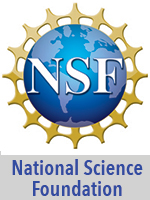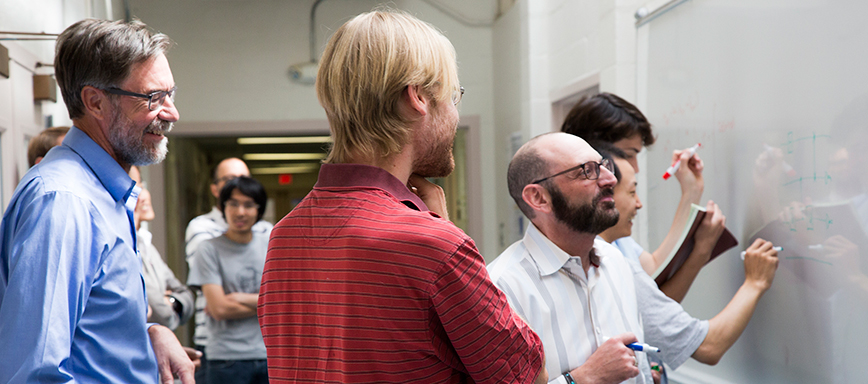Recent News
CHTM Joins NSF's NQVL Pilot Projects
August 9, 2024
OSE PHD, Dr. Xuefeng Li - Wins The Outstanding Interdisciplinary Graduate Programs Award
May 10, 2024
Dr. Ali Rastegari - 2024 OSE Best Dissertation Award Winner
May 10, 2024
2024 OSE Spring and Summer Graduates
May 10, 2024
News Archives
National Science Foundation awards $2.2 million grant to UNM Center for Quantum Information and Control
October 24, 2016 - Excerpted from articles by Kevin Robinson-Avila, Albuquerque Journal; and Aaron Hilf, UNM Newsroom

Through the Center for Quantum Information and Control (CQuIC), formed in 2009, The University of New Mexico and the University of Arizona are working together to articulate the theory of quantum physics, and test and validate it through high-tech experimentation. Scientists at the two universities work together with scientists from Sandia National Laboratories and Los Alamos National Laboratory.
The National Science Foundation (NSF) awarded a five-year, $2.3 million grant in September that converts UNM and its research partner, the College of Optical Sciences at the University of Arizona, into one of only two NSF-funded Focused Research Hubs in Theoretical Physics in the country. Currently, the CQuIC is the only NSF Center focusing specifically on Quantum Information.
Carlton Caves, a distinguished professor of physics and astronomy at UNM and director of CQuIC, envisions computers that can immensely simplify the process of developing new drugs or that send messages so protected that hackers can never break them.
Immense progress in the study of quantum physics brings discoveries of this nature closer, and the University of New Mexico plays a central role in this research.
The NSF grant makes it possible to substantially ramp up the research needed to make such new computing technologies. The grant will pay for enough newly hired post-doctoral scientists to expand center research by 60 percent.
Classical physics focuses on the things all those atoms do in the real world when they come together. Quantum physics looks at how the individual atomic elements operate and communicate with one another.
Unlike linear movement of particles in classical physics, for example, at the atomic and subatomic level, matter can go from one spot to another without moving through the intervening space, something called “quantum tunneling.” Information can move instantly across vast distances.
That unique behavior at the atomic, or quantum, level makes the microscopic world seem strange, paradoxical or counter-intuitive.
“In the last 25 years, we’ve come to realize that those paradoxical aspects can maybe open new doors,” Caves said. “If we can harness how they work, we could use them for processing information in new and more powerful ways. And that’s what quantum science is all about, to harness the way the world works at the microscopic level, allowing us to create things like powerful supercomputers, share unbreakable secrets, or sense very tiny things.”

Carlton Caves (left), UNM distinguished professor of physics and astronomy and director of CQuIC and center faculty member Ivan Deutsch brainstorm with students. (Courtesy UNM Newsroom)
Sources: Learn more in these articles—
• "UNM now a research hub for quantum computing, theoretical physics," by Kevin Robinson- Avila, Albuquerque Journal
• "Center for Quantum Information and Control Receives multi-million-dollar-award," by Aaron Hilf, UNM Newsroom


